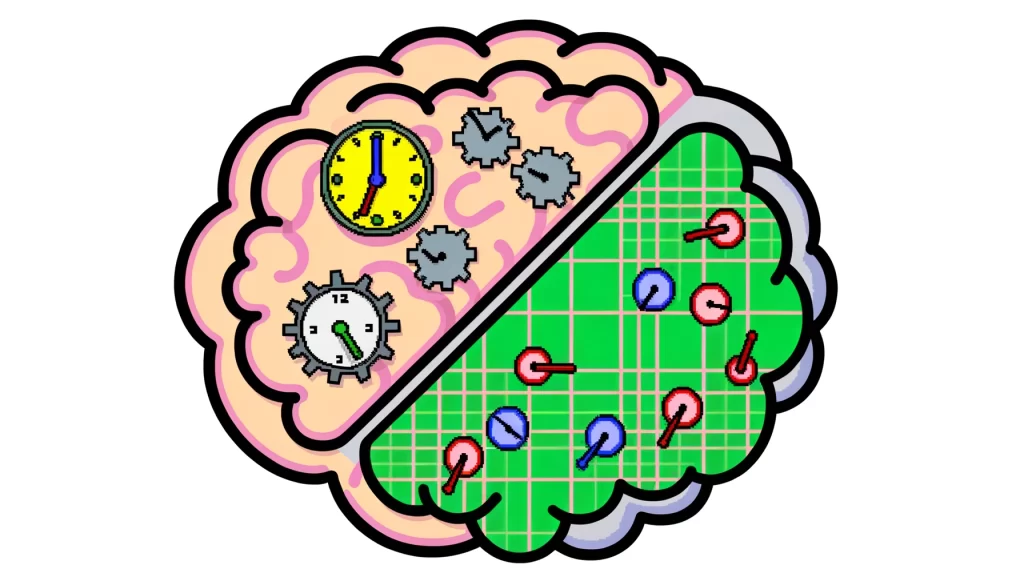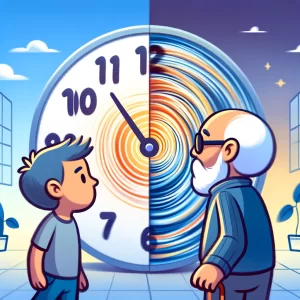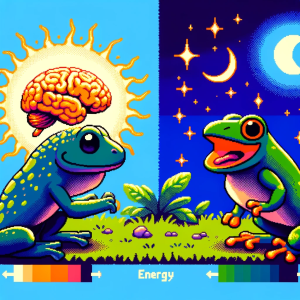
Same Principle, Different Computations: How Time and Space Perception Diverge
Imagine this: you’re racing against the clock while keeping an eye on the distance to your destination. Ever wondered why our sense of time can feel different from our perception of space, even if both are fundamental ways we navigate the world? Recent research led by Sepehr Sima and Mehdi Sanayei from the School of Cognitive Sciences in Tehran, investigates how the human brain processes these two intertwined concepts, offering new insights into the shared principles and distinct computations behind time and space perception.
A Theory of Magnitude:
The study builds on the concept known as “A Theory of Magnitude” (ATOM), which suggests that our perception of time, space, and quantity relies on a shared mechanism in the brain. However, Sima and Sanayei’s findings suggest that while time and space use the same principle, the computations involved differ significantly.
Research Design:
The researchers designed two experiments where participants reproduced specific intervals of time and distance using saccadic eye movements (quick eye shifts). One group was asked to reproduce given time intervals by moving their eyes towards a target after a set duration. The other group was tasked with reproducing spatial distances by moving their gaze to a specific point.
To analyze the data, the team used two main computational models:
- Bayesian Least Squares (BLS): Incorporates prior experiences and context when estimating time and space.
- Maximum Likelihood Estimation (MLE): Doesn’t rely on prior knowledge, estimating values solely based on given observations.
Key Findings:
- Time Perception:
- Prior-Dependent: Time reproduction improved consistently with Bayesian models, meaning participants relied heavily on prior knowledge to estimate time intervals accurately.
- Measurement Variability: The initial perception (measurement stage) of time was noisier than the reproduction stage.
- Space Perception:
- Prior-Independent: In space reproduction, adding prior information barely affected accuracy, suggesting the brain processes space using different mechanisms than time.
- Motor Variability: Saccadic eye movements were more consistent when reproducing spatial distances, indicating a stronger motor control.
Significance of the Study:
The study’s results clarify the relationship between time and space perception. While both domains rely on probabilistic computations, time estimation hinges on prior experiences, unlike spatial estimation, which remains more direct. This divergence challenges the extent to which time and space share processing mechanisms and can impact various applications, from navigation systems to designing better cognitive training programs.
Discussion Questions:
- How do you think these findings might affect our understanding of time and space perception in everyday life, such as when using GPS or managing schedules?
- What other factors, beyond prior experiences, could influence our perception of time and space?
Conclusion
The brain remains a marvel of computational engineering, using the same principle but tweaking its algorithms to measure time and space differently. The journey toward fully understanding this relationship continues, but with studies like this, we’re getting closer.
Embark on a Scientific Adventure:
Dive into the world of science with our weekly newsletter! It’s perfect for teachers and science lovers who want to stay up-to-date with the newest and coolest discoveries. Each issue is filled with the latest research, major breakthroughs, and fascinating stories from all areas of science. Sign up for free and take your teaching and learning to the next level. Start your journey to becoming more informed and in tune with the constantly changing world of science. Subscribe today!
About the Author
Jon Scaccia, with a Ph.D. in clinical-community psychology and a research fellowship at the US Department of Health and Human Services with expertise in public health systems and quality programs. He specializes in implementing innovative, data-informed strategies to enhance community health and development. Jon helped develop the R=MC² readiness model, which aids organizations in effectively navigating change.



